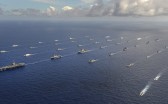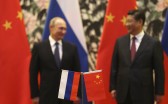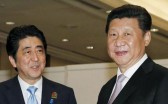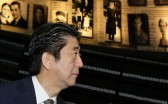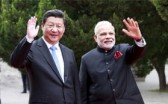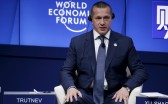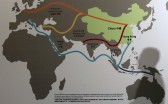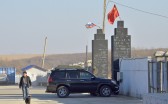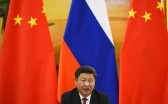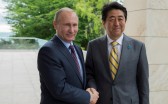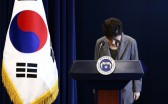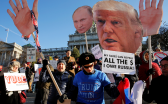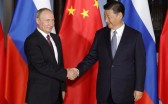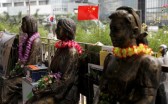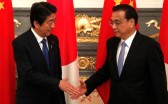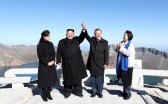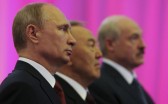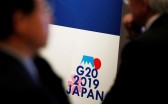Several developments since October threaten the current engagement cycle with Pyongyang. North Korea has warned the United States of an ominous “Christmas gift.”1 It has conducted two “very important” missile-related tests in Sohae.2 It has vowed to demolish South Korean facilities in Mount Kumgang.3 It has ignored US Deputy Secretary of State Stephen Biegun’s plea for denuclearization talks,4 calling American efforts a “trick.”5 It has spurned the cancellation of joint US-ROK military drills6 and fired its 13th short-range rocket since May.7 North Korea’s ambassador to the United Nations has even announced that denuclearization is now “off the table.”8
In any other iteration of diplomacy with North Korea, critics would have pronounced the process long dead. Yet, as I argue in Part I, the unique convergence of leadership configurations in Washington and Seoul toward engagement is a tectonic development that leaves the current diplomatic chapter with no comparable precedent. In the context of this rare moment and the dire circumstances that produced it, the case for pessimism still faces several critical counter-arguments that cannot be ignored.
The rising case for pessimism
To be sure, pessimism is the most natural response to recent developments. North Korea, for one, appears determined to derail the engagement process. Instead of keeping communication channels open, Pyongyang has doubled down on a unilateral, year-end deadline designed to frame Washington and Seoul for the breakdown of talks. Barring active participation from North Korea, both inter-Korean peace and denuclearization appear to be pipe dreams without realistic blueprints.
Meanwhile, South Korea’s regional profile is under siege: ties with Japan are at their worst in recent memory while China relations remain fragile in the aftermath of the THAAD crisis and the US-China trade war. A struggling South Korean economy, combined with the need for sustained regional support for engagement with Pyongyang, has forced Seoul to show its weak hand against Beijing. The recent trilateral summit in Chengdu found South Korean president Moon Jae-in walking on eggshells, paying lip service to a “shared destiny” with Beijing and giving a dangerous nod to China’s “internal affairs” in Hong Kong and Xinjiang.9 Chinese president Xi Jinping has yet to visit Seoul in more than five years, despite meeting with Kim Jong-un five times in the past two years alone.
Likewise, Moon struggled to find rapport with Japanese prime minister Abe Shinzo in Chengdu. The summit only reconfirmed the gulf between Seoul and Tokyo, with the two leaders refusing to compromise on forced labor victims.10 Moon’s eleventh-hour decision to extend the General Security of Military Information Agreement (GSOMIA) last month was proof positive that South Korean autonomy faces a formidable check from Washington. Bickering over GSOMIA has not only cut into Seoul’s diplomatic credit with the United States, but also further narrowed the political space it needs to keep regional stakeholders like Japan invested in inter-Korean engagement, independent of US-DPRK outcomes. The GSOMIA saga represents a harsh reality check against falling out of lockstep with the White House in the future.
Nor does it help that the last two months have witnessed a rare display of discord between Seoul and Washington over alliance cost-sharing. South Korean protesters have publicly destroyed portraits of US ambassador Harry Harris.11 According to a Hankook Research survey, only 4 percent of South Koreans support satisfying American demands to quadruple their financial share in alliance costs.12 In a widely circulated news report, Harris allegedly asked whether Moon Jae-in was surrounded by “leftists who sympathize with North Korea,” a controversial remark that is emblematic of strained US-ROK ties and declining bilateral trust.13 As a result, Seoul is now on rocky terrain with every single regional stakeholder including the United States. This erodes Seoul’s bargaining power to promote regional support for inter-Korean projects.
At home, Moon remains a beleaguered president whose controversial ex-justice minister Cho Kuk has only recently been spared an arrest warrant for corruption.14 Awaiting parliamentary elections in 2020, Moon’s party faces an ongoing challenge from the conservative opposition, which is currently staging a filibuster to block electoral reform that could benefit the progressives.15 Division in the National Assembly deflates the capacity of the Moon administration to justify a controversial policy of engagement to a domestic electorate.
There’s no doubt that all of these developments bode ill for denuclearization and, by extension, inter-Korean relations. A major military provocation from Pyongyang would appear to seal the deal and disrupt fantasies of inter-Korean reconciliation for the foreseeable future.
An alternative interpretation
Yet, the most striking constant over the last two months is not North Korean recalcitrance, but the continuing alignment between Seoul and Washington on diplomacy with Pyongyang. The overarching constellation has not changed in the last two months. The US president remains more receptive to North Korean demands than any other American leader in recent memory, ignoring Pyongyang’s short-range missile tests, cancelling several joint military drills with Seoul, and questioning the security apparatus on the Korean Peninsula altogether. The threshold for compromise with Pyongyang under Trump remains that much lower. As a result, even with threats of a Christmas gift and satellite images revealing activity at a North Korean missile launch facility, Trump and Moon have agreed not to reverse course.16 American diplomatic patience makes it costlier for Pyongyang to unilaterally reject engagement and complicates North Korean attempts to blame Washington with plausible deniability.
Meanwhile, South Korea continues to promote an era of good feelings with North Korea. Even amid tensions, the Seoul Broadcasting System (SBS), a major national South Korean television station, received permission from the North to produce a three-part special documentary set in Pyongyang and Mt. Kumgang featuring five comedians from South Korea.17 Depictions of life in North Korea have now become normalized on South Korean television, with the new popular soap Crash Landing on You taking place almost entirely in a North Korean setting and the recent South Korean blockbuster Ashfall pitting inter-Korean camaraderie against American denuclearization efforts. Such regular portrayals of inter-Korean amity and popular imaginations of life in North Korea have no precedent in mainstream South Korean entertainment. These changes in South Korean norms give potential life to inter-Korean affinity beyond denuclearization tensions.
Most important, however, are the dire circumstances that produced the current diplomatic constellation in the first place. It is not by mere coincidence that Seoul and Washington have converged on engagement with North Korea. The current mood was the conscious product not only of an unconventional American president, but also of a punitive sanctions policy that spectacularly failed to stop North Korean nuclearization and a subsequent period of “fire and fury” that created urgency for compromise in both Washington and Pyongyang. Despite discouraging signals from the North, it is important to recall that both parties came to the table because the benefits of a potential deal were perceived to outweigh the benefits of every other alternative, including muddling through, strategic patience, and war. As Jina Kim noted in Negative Scenario I, “walking away from the negotiating table without legitimate cause would not be in [North Korea’s] interest” because a new chapter of unpredictable hostility on the Korean Peninsula is detrimental to all stakeholders including Kim Jong-un himself. That reality remains unchanged: the status quo ante is undesirable to all. Especially ahead of an important plenary session of the Workers’ Party of Korea and a domestic New Year’s speech, walking away completely from the table leaves Kim without a diplomatic victory to justify his policy of the past two years.18 Even as Seoul and Washington brace for a major provocation from the North, this explains why Jean Lee of the Wilson Center predicts Kim will ultimately “avoid overtly confronting [Trump], because he wants to leave open an opportunity.”19 For the same reason, others believe North Korea may choose to test a satellite rather than an intercontinental ballistic missile to avoid the most visceral response from Washington.20
Despite a year-end deadline, recent North Korean threats therefore remain part of a longer-term power struggle toward an eventual compromise. Even as North Korea makes threats, there are delicate lines and strategic boundaries it has been cautious not to cross. Some of these boundaries—such as a moratorium on ICBM and nuclear tests—are self-imposed. And the mere existence of such boundaries indicates a basic commitment to avoiding catastrophic conflict. In fact, declaring engagement dead would be a disingenuous summary of a period that objectively saw increased stability on the Korean Peninsula and a voluntary weapons-test moratorium that has lasted nearly two years and counting. But these boundaries are murky and continue to change with the volatile political context in which they exist. President Trump’s impeachment is one such change that could alter Pyongyang’s calculus around what it could extract from Washington. Political urgency in the White House ahead of an election cycle is another. As always, these changes reflect the larger game of self-preservation. And this basic aversion to instability and catastrophe is a natural deterrent that triggered the current engagement process in the first place. It continues to remain a strong insurance against the complete, irreversible breakdown of diplomacy between Washington and Pyongyang, and by extension, inter-Korean engagement.
1. Ben Fox, “US Watching North Korea for ‘Christmas Gift’ Missile Launch,” The New York Times, December 20, 2019, https://www.nytimes.com/aponline/2019/12/20/us/politics/ap-us-united-states-north-korea.html
2. Simon Denyer and Min Joo Kim, “North Korea claims to have carried out a ‘very important’ test at rocket launch site,” The Washington Post, December 7, 2019, https://www.washingtonpost.com/world/2019/12/07/north-korea-claims-have-carried-out-very-important-rocket-test/
3. “N.K. has ‘unwavering will’ to develop its own tourist zone at Mt. Kumgang: propaganda outlet,” Yonhap, November 27, 2019, https://en.yna.co.kr/view/AEN20191127001700325
4. Hyonhee Shin and Sangmi Cha, “U.S. envoy Biegun to North Korea: ‘We’re here, you know how to reach us,’” Reuters, December 16, 2019, https://www.reuters.com/article/us-northkorea-usa-southkorea/us-envoy-biegun-to-north-korea-were-here-you-know-how-to-reach-us-idUSKBN1YK03I
5. Choe Sang-Hun, “North Korea Says U.S. Sought More Talks, but Calls It a ‘Trick,’” The New York Times, November 14, 2019, https://www.nytimes.com/2019/11/14/world/asia/nuclear-talks-north-korea-us.html
6. Choe Sang-Hun, “U.S. Offers North Korea ‘Act of Good Will.’ Not Enough, North Says,” The New York Times, November 18, 2019, https://www.nytimes.com/2019/11/18/world/asia/north-korea-us-talks.html
7. Choe Sang-Hun, “Time Is Running Out for Trump’s North Korean Diplomacy, Analysts Say,” The New York Times, November 28, 2019, https://www.nytimes.com/2019/11/28/world/asia/north-korea-trump-nuclear-talks-deadline.html
8. “北 유엔대사 “비핵화, 美와 협상 테이블에서 이미 내려져,” DongA Ilbo, December 8, 2019, http://www.donga.com/news/article/all/20191208/98703346/1
9. Katsuji Nakaza, “In ‘Three Kingdoms’ rivalry, China’s waltz with Japan is temporary,” Nikkei Asian Review, December 26, 2019, https://asia.nikkei.com/Editor-s-Picks/China-up-close/In-Three-Kingdoms-rivalry-China-s-waltz-with-Japan-is-temporary
10. Peter Landers, “Frosty Relations Fail to Warm Up During Japan-South Korea Meeting,” The Wall Street Journal, December 25, 2019, https://www.wsj.com/articles/frosty-relations-fail-to-warm-up-during-japan-south-korea-meeting-11577191727
11. Sangmi Cha, “South Korean protesters destroy portraits of U.S. ambassador,” Reuters, December 13, 2019, https://www.reuters.com/article/us-southkorea-usa/south-korean-protesters-destroy-portraits-of-u-s-ambassador-idUSKBN1YH16X
12. Adam Taylor, “Just 4 percent of South Koreans would meet Trump’s demands to pay billions more for U.S. troops, new poll finds,” The Washington Post, December 16, 2019, https://www.washingtonpost.com/world/2019/12/16/just-percent-south-koreans-would-meet-trumps-demands-pay-billions-more-us-troops-new-poll-finds/
13. Ji-won Noh, “Harry Harris’ rudeness and Trump’s disregard for US allies,” Hankyoreh, December 11, 2019, http://english.hani.co.kr/arti/english_edition/e_international/920447.html
14. “Arrest warrant rejected for Cho Kuk in power abuse case,” The Korea Herald, December 27, 2019, http://www.koreaherald.com/view.php?ud=20191227000014
15. “Main opposition to stage filibuster to prevent vote on key reform bills,” The Korea Herald, November 29, 2019, http://www.koreaherald.com/view.php?ud=20191129000522
16. Josh Smith, “Trump, South Korea’s Moon discuss trying to maintain talks with North Korea,” Reuters, December 7, 2019, https://www.reuters.com/article/us-southkorea-usa-northkorea/trump-south-koreas-moon-discuss-trying-to-maintain-talks-with-north-korea-idUSKBN1YB042
17. Sang-eun Kwok, “샘 해밍턴의 페이스北…북한 관광 이렇게 이뤄졌다,” SBS News, December 11, 2019 https://news.sbs.co.kr/news/endPage.do?news_id=N1005559277&plink=TOPHEAD&cooper=SBSNEWSMAIN
18. David Sanger, et al., “U.S. Braces for Major North Korean Weapons Test as Trump’s Diplomacy Fizzles,” The New York Times, December 21, 2019, https://www.nytimes.com/2019/12/21/world/asia/north-korea-missile-test-trump-kim.html
19. Ibid.
20. Ibid.
